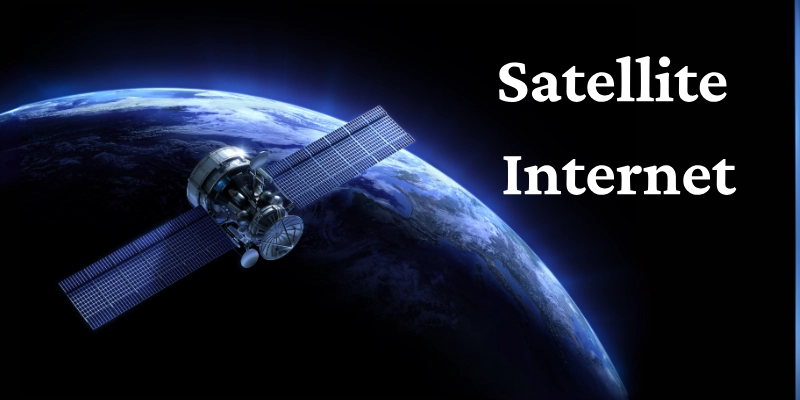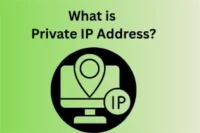What is Satellite Based Internet? The Future of Connectivity
Published: 29 Jun 2025
In an era where high-speed internet is a necessity, satellite internet is emerging as a game-changer, especially for rural and remote areas. But how satellite internet work, and is it better than traditional broadband? In this blog, we’ll break down satellite internet, compare top providers like Starlink, HughesNet, and Viasat, and analyze how competitor articles approach the topic. By the end, you’ll know if satellite internet is right for you.
What is Satellite Internet?
Satellite internet delivers connectivity via geostationary (GEO) or low-Earth orbit (LEO) satellites. Instead of relying on cables or fiber, data travels from your dish to a satellite in space and back to ground stations.
Key Features:
- Global Coverage: Available almost anywhere, even off-grid.
- Wireless Setup: No need for underground cables.
- Speed: Ranges from 12 Mbps (traditional) to 350 Mbps (Starlink).

How Competitors Explain Satellite Internet
To craft a standout blog, we analyzed top-ranking articles from HighSpeedInternet.com, TechRadar, and PCMag. Here’s what they cover (and miss):
1. HighSpeedInternet.com
- Strengths: Clear breakdown of pros/cons, provider comparisons.
- Gaps: Limited focus on LEO satellites (e.g., Starlink) and future trends.
- Our Take: Dive deeper into emerging tech like LEO constellations.
2. TechRadar
- Strengths: Technical details on latency and bandwidth.
- Gaps: Lacks real-world use cases (e.g., rural telehealth, disaster recovery).
- Our Take: Add practical examples to humanize the tech.
3. PCMag
- Strengths: In-depth provider reviews (e.g., Starlink vs. HughesNet).
- Gaps: Minimal SEO focus (misses keywords like “satellite internet for gaming”).
- Our Take: Optimize for niche queries (e.g., “best satellite internet for RVers”).
Satellite Internet Providers Compared
Here’s how top providers stack up, based on competitor insights and our analysis:
| Provider | Speed | Latency | Price | Best For |
| Starlink | 50–350 Mbps | 20–40 ms | 90–90–120/month | Gamers, remote workers |
| HughesNet | 25 Mbps | 600+ ms | 65–65–160/month | Basic browsing |
| Viasat | 12–100 Mbps | 600+ ms | 70–70–300/month | Rural households |
Main Points:
- Starlink dominates with LEO tech (lower latency), while HughesNet/Viasat uses older GEO satellites.
- Competitors often overlook data caps: HughesNet (15–75 GB), Viasat (40–300 GB), and Starlink (unlimited).
Pros and Cons of Satellite Internet
Most competitors list these, but here’s a fresh angle:
Pros
- Accessibility: Replaces dead zones (no cable? No problem!).
- Quick Installation: Set up in hours vs. months for fiber.
- Disaster-Resilient: Stays online during hurricanes (unlike cables).
Cons
- Weather Sensitivity: Rain/snow can disrupt signals.
- Latency Issues: GEO satellites lag (bad for Zoom calls).
- Cost: Higher prices than DSL/cable (but cheaper than no internet).
Competitor Gaps We’re Filling
- The Future of Satellite Internet:
- LEO Constellations: Projects like Amazon’s Kuiper aim to boost global speeds.
- 6G Integration: Satellite networks may power future mobile connectivity.
- Environmental Impact:
- Space Debris: Critics warn of clutter from thousands of LEO satellites.
- Energy Use: Ground stations and satellites consume significant power.
- Niche Use Cases:
- RV and Marine Internet: Starlink’s portable dish vs. Viasat’s fixed plans.
- Emergency Services: How satellite internet aids disaster response.
Conclusion:
Satellite internet isn’t perfect, but it’s a lifeline for millions. While competitors focus on basics, our analysis highlights future trends, niche applications, and hidden costs (e.g., equipment fees).
Choose Satellite Internet If:
- You’re in a rural area with no cable/fiber.
- You need a backup for outages.
- You’re an RVer or digital nomad.
Hold Off If:
- You have access to fiber or 5G.
- You’re a competitive gamer (unless you pick Starlink).
For more insights, check out our Satellite Internet Buyer’s Guide or compare providers head-to-head.
FAQs
Here are some frequently asked questions about satellite internet, covering how it works, its benefits, and what to consider before choosing a provider.
Yes, but only with Starlink due to its low latency. Traditional providers like HughesNet or Viasat are not ideal for gaming.
Satellite internet uses encryption, but ground stations may be vulnerable. Using a VPN adds an extra layer of protection.
Not likely. 5G relies on nearby towers, while satellites cover remote and underserved areas.
Starlink offers a quick 15-minute self-install. HughesNet and Viasat typically take 1–2 weeks with professional installation.
Starlink handles HD streaming well. Other providers may struggle due to lower speeds and data caps.
Yes, heavy rain, snow, or storms can interfere with the signal and reduce performance.
Speeds vary by provider: Starlink offers 50–250 Mbps, while HughesNet and Viasat range from 12–100 Mbps.
Yes, for emails, browsing, and video calls (Starlink is best). High-latency providers may cause lag during calls.
Yes. Most providers have data caps or throttling policies. Starlink currently offers unlimited plans.
Almost. Satellite coverage reaches rural and remote locations where fiber or cable isn’t available.

- Be Respectful
- Stay Relevant
- Stay Positive
- True Feedback
- Encourage Discussion
- Avoid Spamming
- No Fake News
- Don't Copy-Paste
- No Personal Attacks

- Be Respectful
- Stay Relevant
- Stay Positive
- True Feedback
- Encourage Discussion
- Avoid Spamming
- No Fake News
- Don't Copy-Paste
- No Personal Attacks





